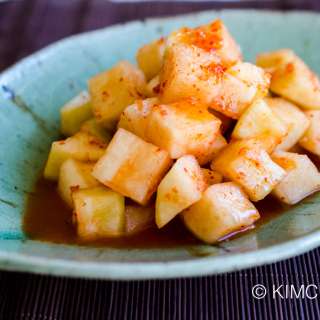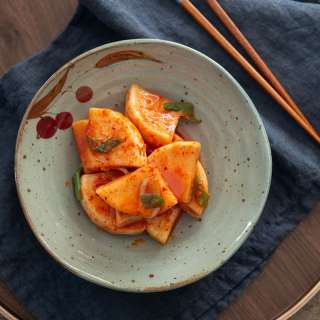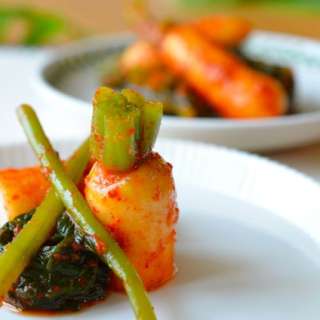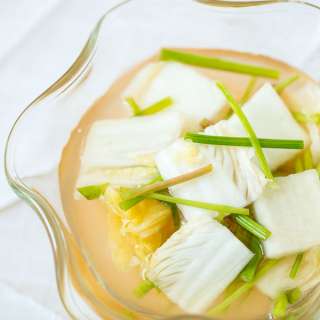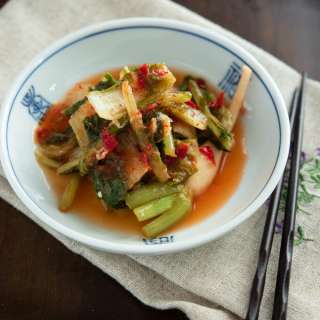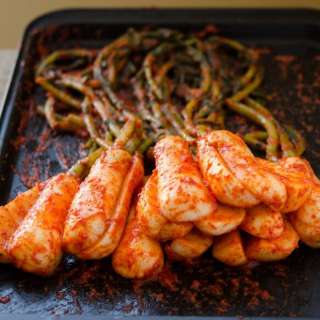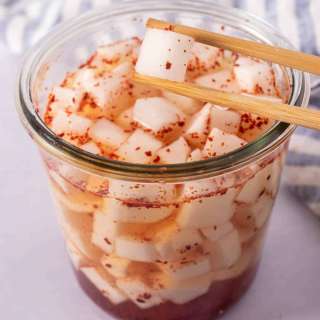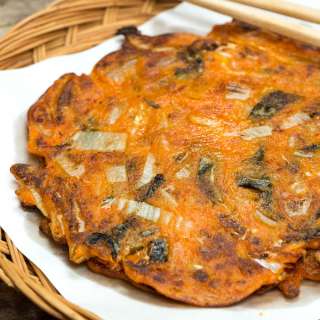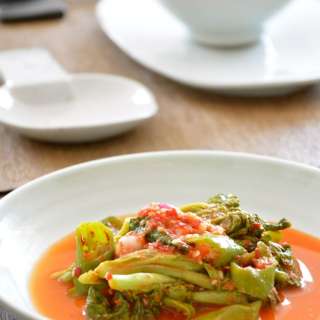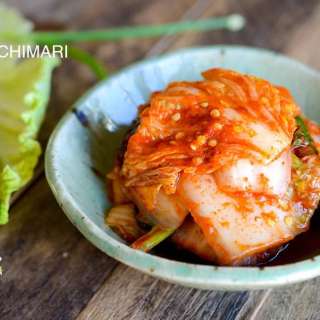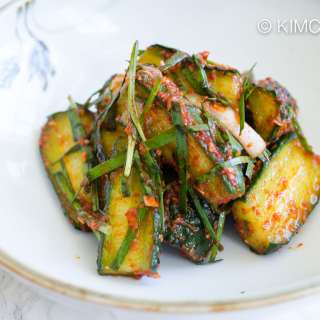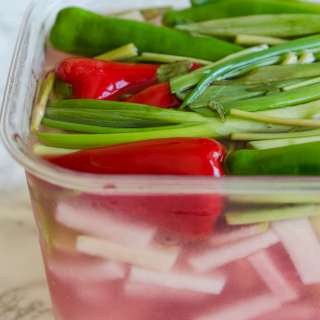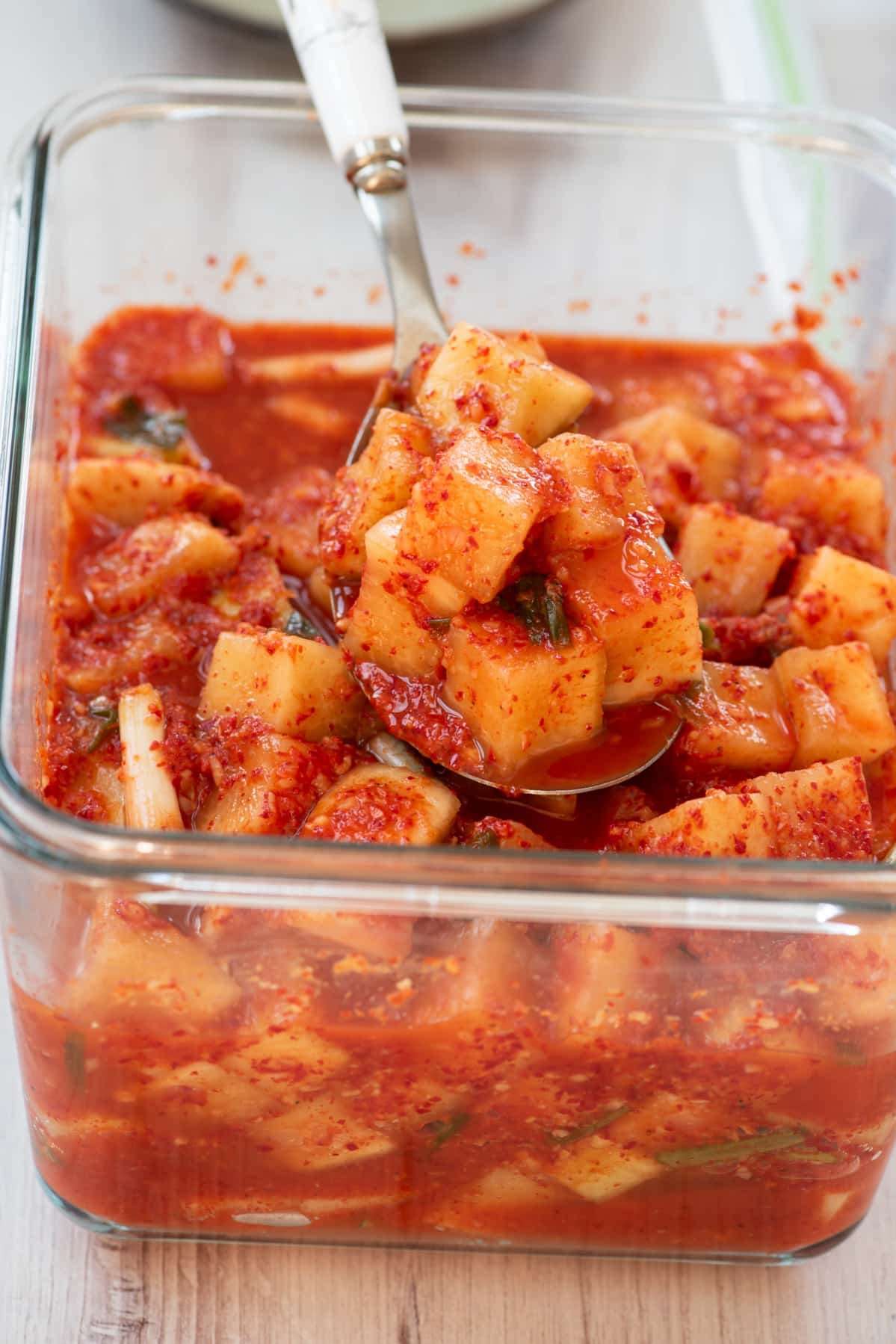
Kkakdugi (Cubed Radish Kimchi)
User Reviews
4.7
201 reviews
Excellent

Kkakdugi (Cubed Radish Kimchi)
Report
Crunchy, spicy, and deeply savory, kkakdugi is a highly popular Korean radish kimchi. And easy to make!
Share:
Ingredients
- 5.5 pounds Korean radishes (mu, 무) See note 1
- 3 tablespoons Korean coarse sea salt (굵은소금) less if using finer salt - See note2
- 3 or 4 scallions cut into about 1-inch lengths
Seasonings
- 1/2 cup gochugaru (고추가루) use more or less to taste (a tablespoon or 2)
- 2 tablespoons myulchiaekjeot (멸치액젓), fish sauce See note 3
- 3 tablespoons saeujeot (새우젓), salted and fermented shrimp See note 3
- 3 tablespoons minced garlic, 8-9 plump cloves see note 4
- 1 teaspoon grated ginger, about 1-inch thumb size see note 4
- 1 tablespoon sugar (adjust to taste or omit) You may need more if your radish is bitter.
- 1/2 Korean/Asian pear or apple - optional see note 4
- 2 tablespoon cooked rice, heated if hardened - optional see note 4
Kitchen Tools
- A large mixing bowl 7 – 8 qt
- a large colander
- kitchen gloves
- 1 gallon or little smaller airtight container or jar
Instructions
- Clean the radishes by scrubbing with a brush and/or scratching off the stubborn impurities with a small knife. Peel the skin only if necessary. Cut into 3/4 to 1-inch thick discs, and then cut each disc into 3/4 to 1-inch cubes, placing in a large bowl. (The cubes will look big but will shrink during the salting and fermentation processes.)
- Sprinkle the salt over the radishes and toss well to coat evenly. Let sit for about an hour, until the radishes have slightly softened and released some liquid. Flip them over once or twice during salting.
- Drain the radishes in a colander and discard the liquid. Do NOT rinse. (The radishes still contain sufficient water content that will be released during the fermentation process.)
- Place the radishes back in the bowl. Add the gochugaru and mix well, rubbing the radishes by hand (wear kitchen gloves). Add the remaining seasoning ingredients and mix well to evenly distribute the seasonings. Taste a little bit of the seasoning. It should be a little too salty to eat as is. Add some salt if necessary. Toss the scallions in gently. (The radishes will be a little dry at this point, but they will release water during the fermentation process.)
- Store in an airtight container or jar. Before closing the lid, press the kkakdugi down hard with your hand to remove air pockets between the radish cubes.
- Leave it out at room temperature for two to three days, depending on your room temperature and how fast you want your kimchi to ripe. Then, store in the fridge. Kkakdugi tastes best after a week or two in the fridge to fully develop the flavors. It maintains great flavor and texture for several weeks.
Notes
- Buy the ones with smooth skins that are firm and heavy.
- If Korean coarse sea salt is unavailable, 3 TBS of Korean coarse sea salt, for example, is approximately equivalent to 2.5 TBS of coarse Kosher salt or 2 tablespoons of Morton’s canning and pickling salt, which is very fine grain salt.
- If salted shrimp is not available, you can use a little more fish sauce. If neither is an option, use salt to season or Korean soup soy sauce (gukganjang, 국간장) in combination with salt.
- gukganjang
- If using optional fruit and/or cooked rice, blend them with garlic and ginger. Add some water (about 1/2 cup) for easier blending.
Genuine Reviews
User Reviews
Overall Rating
4.7
201 reviews
Excellent
Other Recipes
